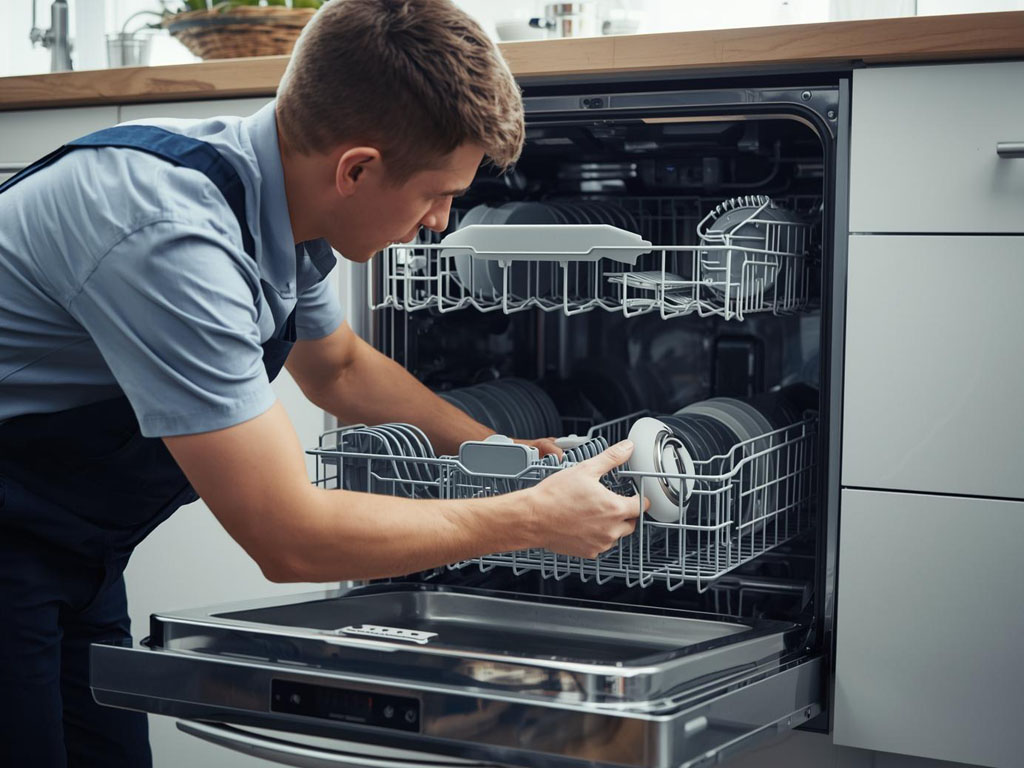Regular dishwasher maintenance is the key to long-term operation without repairs, leaks, or emergencies. Smart dishwasher care, cleaning, the right dishwasher solutions and proper loading, keeps every program running smoothly. Carefully read how to use the dishwasher before testing modes, so you know how to maintain a dishwasher from day one.
Preparing for the first power-on
Manufacturers require an idle test cycle (no dishes) before actual use. This flush removes tiny debris and grease residues and helps you understand how the unit functions. During a test run, you can check if the water heats correctly and how fast it drains, and spot installation errors like pinched wires/hoses or early leak signs. Think of this as a mini dishwasher tune up before real loads. You can select a mode by pressing a single button or the key combo in the manual.
After the rinse completes, wait for the machine to cool, then do the first full wash. A common question is how often should you run the dishwasher, best practice is to run it when it’s sensibly full to avoid stale odors and keep seals lubricated. If all preparatory actions are correct, the dishwasher starts automatically when the door closes. It’s worth checking the very first wash to confirm loading is correct. After the cycle, wait 10–12 minutes for the dishes and internal parts to cool. Inspect the utensils: if food traces remain, choose a longer program next time. Whitish stains suggest the rinse aid under-performed, raise the dose or try a better product.
What are the standards for loading a dishwasher?
Items in the pull-out baskets must be placed so water reaches all sides and drains freely. Full-size and slim models usually have 2–3 baskets: the lower zone is more intensive for standard programs; delicate modes focus on the upper basket for glass and crystal.
Spray arms sit below and above the baskets; they rotate during operation, so align tall items to avoid contact. If large cookware doesn’t fit the lower section, remove the top basket and wash in one section. Deep containers face downward so water flows along the sides.
The lower section often runs hotter and more aggressively; place plastic and fragile items on top. Correct placement is essential for keeping dishwasher clean inside and for consistent results.
Instructions for filters cleaning
The filter system (usually 2–3 filters at the bottom) needs regular cleaning, don’t wait for full clogging. Users often ask, how often should you clean dishwasher parts and do dishwashers need to be cleaned if dishes look fine? Yes, fat and fine debris accumulate over time. Consider this your dishwasher maintenance checklist:
- Turn off the dishwasher. If the outlet is hard to reach, switch off the breaker.
- Remove remaining water at the bottom with a cloth or sponge.
- Unscrew the top part and remove the filters.
- Disconnect the fine filter.
- Clean parts with a brush and wash with detergent.
- Reinstall in reverse order.
Use toothbrushes or kitchen brushes, powders, gels, or baking soda. If you notice white stains or limescale, perform descaling. Apply limescale removers; if none are available, plain citric acid works.
How to extend the life of a dishwasher?
As a rule for how often to clean dishwasher filters, do a quick rinse monthly and a deeper clean every 2–3 months; that’s how to extend the life of your dishwasher and maintain performance.
If noise, odors, or drainage issues persist, that’s how to service a dishwasher moment, call a technician. Over many years, if repairs become frequent, assess how often should you replace your dishwasher in line with the manufacturer’s lifecycle guidance.



